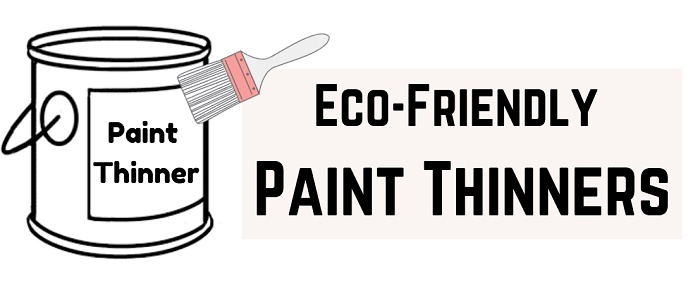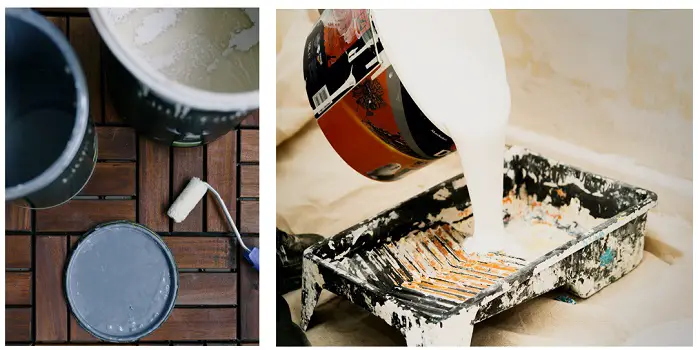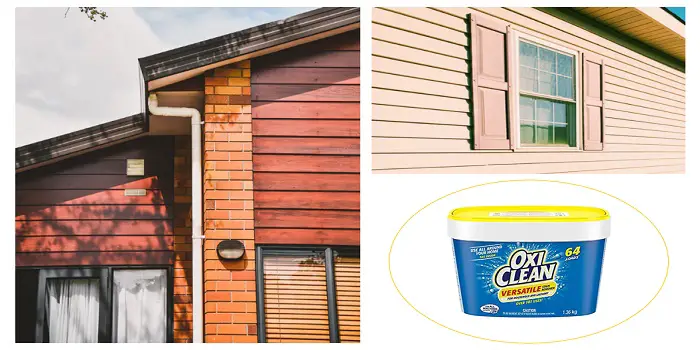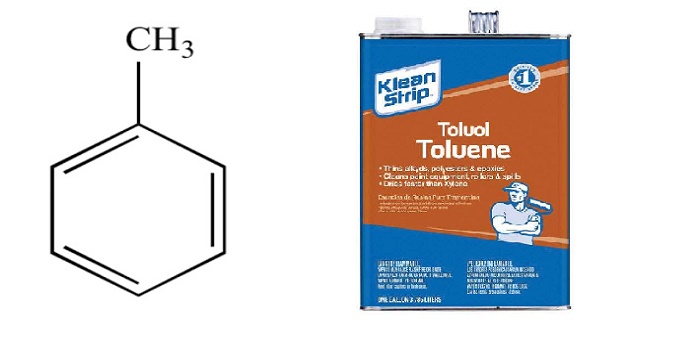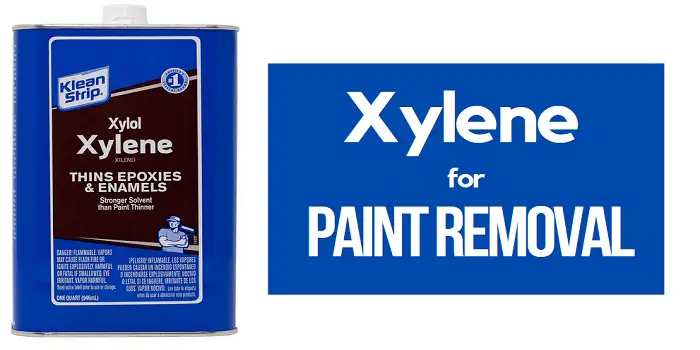
Xylene is exceptionally effective in removing old paint from most surfaces without damaging them.
It’s also an excellent general-purpose cleaner for a variety of things as well, including stains on wood, rust, resins, grease, glue, and even enamels.
Because it’s safe to use on so many surfaces, it can be used to clean garage floors, garage doors, and even engine parts or your tools that get paint or other things on them.
What's Here in the Article:
Steps for Removing Paint with Xylene
Xylene is a highly versatile chemical used to remove paint on various surfaces.
However, you need to use Xylene in a well-ventilated area, as breathing it, even in small doses, can cause headaches and dizziness and irritate your nose, mouth, and throat.
Below are a few steps you will need to follow to get the paint off.
Step 1 – Read Any Directions from the Manufacturer
While using Xylene to remove paint is relatively simple, you should ensure that you read any instructions or safety precautions before proceeding.
Also, be aware that while Xylene is perfectly safe for most surfaces, it can discolor materials.
So ensure you don’t drip it or rub it on the carpet, curtains, or other similar things.
Step 2 – Prepare Yourself with PPE
Xylene is safe when handled correctly. However, that involves a number of steps to prepare yourself.
- Use it in a well-ventilated area; otherwise, have a respirator and not just a face mask.
- Cover your body by wearing a long-sleeved shirt and long pants.
- Wear eye protection
- Wear gloves
- Ensure you wear work boots so you don’t spill Xylene on your feet.
Most importantly, cover everything so that Xylene can’t touch your skin and you can’t inhale it.
You keep taking safety precautions because Xylene is only safe when used correctly.
It’s still a harsh chemical that requires proper handling.
Step 3 – Fill Container with Xylene and Test the Area
Fill a sturdy container with the amount of Xylene you may need.
You should not be directly adding Xylene from the bottle to any rags or cleaning materials as this may cause spills or additional danger to yourself.
Try to remove a small section of paint with Xylene.
This will ensure that you’re not going to damage a large area or that the underlying surface won’t be left stained.
If you find the small area has been cleaned well, you can use Xylene for the larger area with more confidence.
If the area hasn’t been cleaned well or the underlying surface has been left stained, you may need to look at alternative options for cleaning the paint or restoring the surface later.
Step 4 – Start Removing Paint with Xylene
Depending on the surface, you have a few options for removing the paint.
Continue through each step until the paint gets removed from your surface.
Use a soft cloth that isn’t heavily dyed, as the dye may run onto the surface.
Dip your cloth or rag into the Xylene container and apply Xylene over the surface.
Give the Xylene some time to work, and you may even be able to rub the paint off with the rag.
Replace the rag often so you’re not spreading too much additional dirt everywhere and because paint may be accumulating on the rag.
If needed, use steel wool or a scrubbing brush to work the paint off the surface; make sure you’ve dipped it or applied additional Xylene to help work it all through.
Use a paint scraper in hard-to-reach places or, if you prefer, steel wool.
If you’re using Xylene to remove paint from tools or other small items, then you can simply place them in a container of Xylene and then wipe the paint off.
Step 5 – Clean Up
Once you’ve got all the paint off, you’ll want to clean the area with a soapy solution to make sure no leftover Xylene is on any surface.
Make sure that any tools or rags that you use get cleaned.
The final cleanup step would be to ensure that you and your clothing are all cleaned and free of Xylene.
Alternatives to Xylene for Removing Paint
If you don’t have Xylene available or it’s not to your liking for some reason, there are many alternatives to removing paint.
Some are more effective than others, and some should only be used under certain circumstances.
- Toluene is Xylene’s primary competitor, offering the same thing but from different chemical compositions.
- Use a paint scraper if the paint just isn’t adhering to the surface properly. It won’t be effective in curing paint and should not be used as it could damage the underlying surface.
- WD-40 or similar products can be used if the paint has only recently dried, and you can use it to soften and then remove the paint with a paint scraper.
- Alcohol can be used but only on latex paint.
- Acetone can be used on most paints, and then a paint scraper can be used to get the paint off. However, Acetone can damage some surfaces, such as plastic. It’s also a more expensive and toxic product than Xylene.
- Paint thinners as that are what Xylene is.
- Lacquer thinner is used in the same way as Xylene.
- Heat guns are available that can be used to remove paint from surfaces. However, you need to keep it moving around, and it should not be used on materials that can melt like plastic.
If you use Xylene often, something to consider is that it can have long-term effects, especially if you’re constantly touching or inhaling it.
There is a massive range of natural alternatives to Xylene, which work effectively but take a little longer.
However, when your health is at risk, the extra time may be worth it.
How to Choose the Right Chemical Stripper for The Job?
Picking the right chemical stripper for your paint removal job relies on a number of factors.
You need to consider the surface you are removing paint from and your preferences, especially around safety.
There are four main types of chemical strippers:
Solvent Paint Strippers
Solvent strippers are the most toxic and strongest option for removing paint quickly.
They are simply breaking the bond between the surface and the paint so you can scrap or rub the paint away.
These paint removers are most effective on metal, masonry, and wood surfaces.
They’re also good at not leaving discoloration on the surfaces.
Safety: Solvent paint strippers are highly toxic, and you should always be wearing PPE gear, specifically respiratory, gloves, and even goggles.
If using these often, consider whether one of the less toxic alternatives would be better.
Caustic Paint Strippers
Caustic strippers use some kind of active ingredient that converts the paint into a soap-life substance which can then be wiped away.
These paint removers are most effective on oil-based paints from masonry surfaces, such as your concrete garage floor and brick fireplaces.
They’re not effective on epoxy or polyurethane.
They can also erode some metals like aluminum and can stain woods which will require bleaching.
Safety: Safer than solvents, caustic paint strippers can still irritate your ears, nose, and throat.
Make sure you’re wearing PPE gear so you’re not inhaling or touching it.
Biochemical Paint Strippers
Biochemical strippers are much safer than solvent and caustic options.
However, they take longer to work and aren’t as strong. So particularly tough paint may be resistant to some of these.
These paint removers are most effective on oil-based paints applied to wood, metal, and masonry surfaces. You can’t use them on epoxy or polyurethane surfaces either.
Safety: These are a much safer alternative; however, they still have the ability to strip paint, so consider wearing PPE gear so you’re not inhaling too much of it.
Zero-VOC Paint Strippers
Zero-VOC strippers are made without some of the harsher components found in other chemical strippers.
As a result, they’re a pricier option but are better for your health.
When applied to metal and masonry surfaces, these paint removers are most effective on water and oil-based paints.
They can help on wood surfaces but aren’t the best option. They’re ineffective on epoxy and polyurethane surfaces.
Safety: Low or Zero VOC paint strippers are the safest option for chemical strippers.
However, direct exposure to them can still irritate the area. You should still consider a respirator and gloves when handling these.
Conclusion
While Xylene is an effective paint remover for almost all surfaces and paint types, it does pose health issues, especially when you’re using it often.
If looking to purchase Xylene, you’ll be able to get it from almost any kind of hardware or general-purpose store.
Places like Home Depot, Walmart, and even Amazon sell Xylene, so it’s very easy to get and use.
If you decide to use one of the alternatives, you’ll need to ensure that it’s effective on the surface you’re using it on, as solvents are the only chemical that will work on almost any surface and type of paint.
Stay safe and always use a respirator and other protective gear when using any kind of paint remover.

Douglas Becker (aka Painter Doug) has over twenty years of experience as a painter in Adkins, Texas. At present, he resides in Florida with his family.
From painting multi-storeyed houses, condos, and apartments to large commercial buildings and small offices, he had served various customers in areas not only in Adkins but also in Southwest Florida, Sarasota, Naples, and many more. To know more about him check here.

